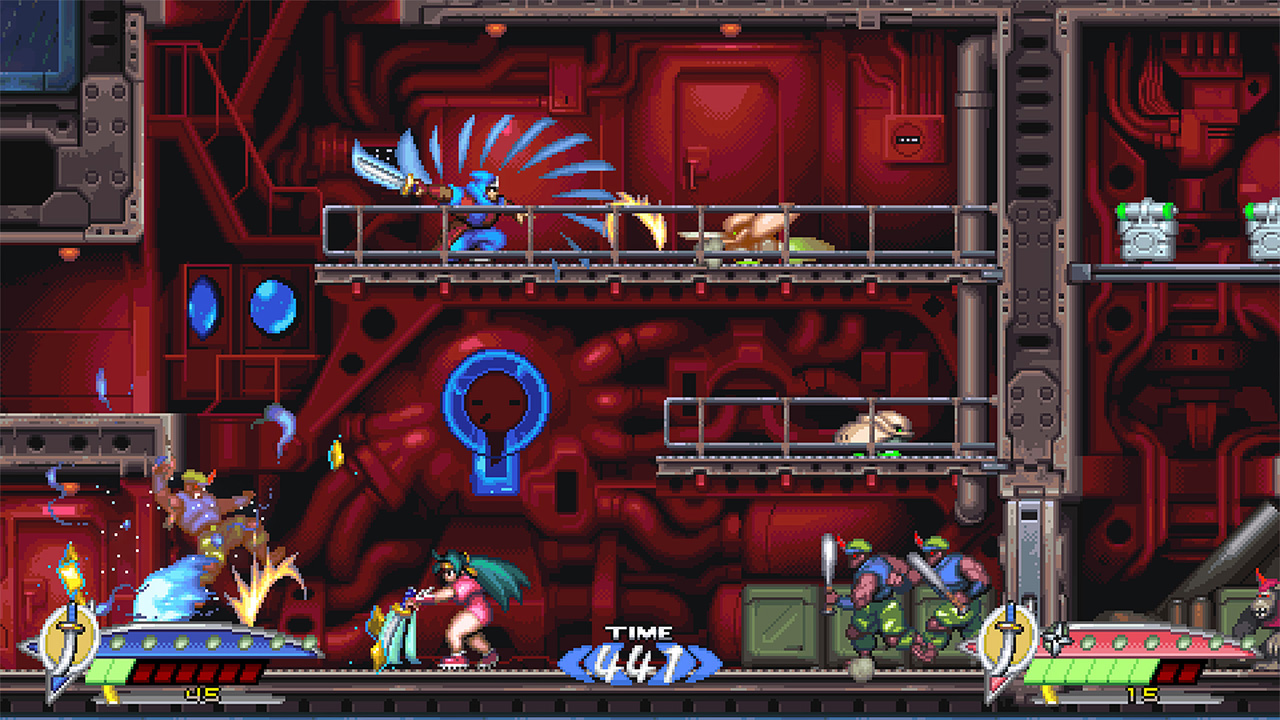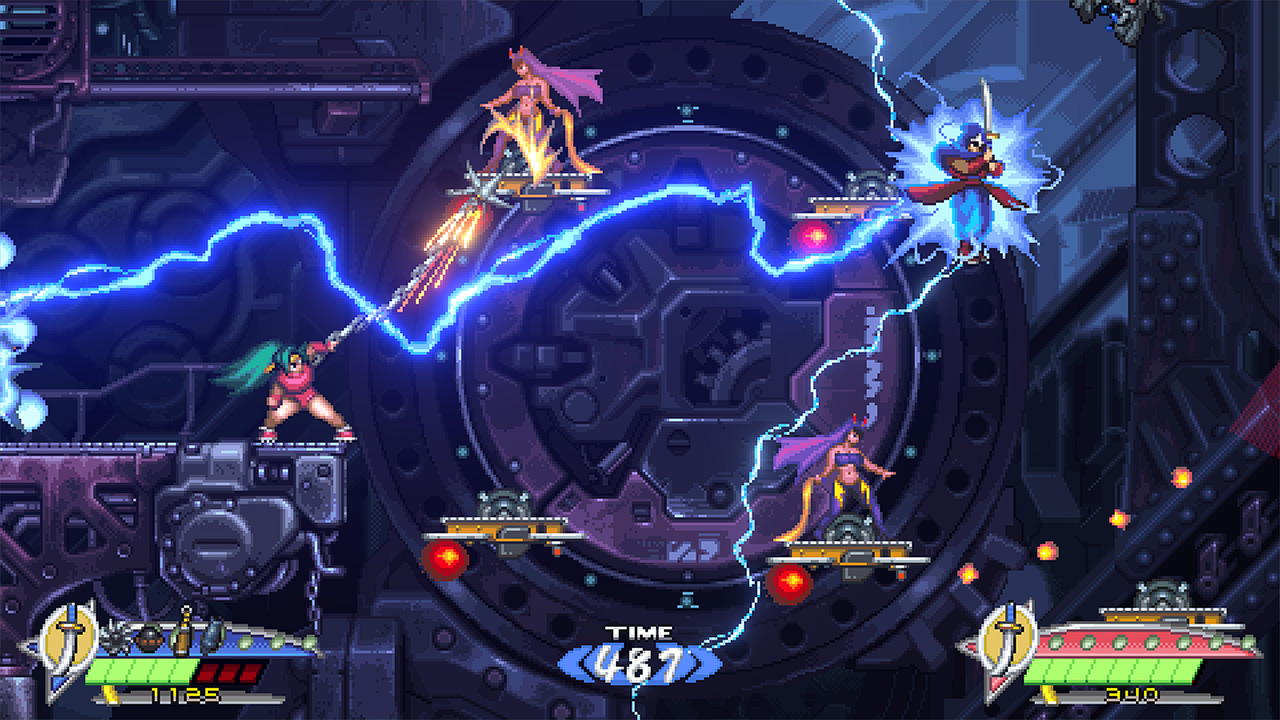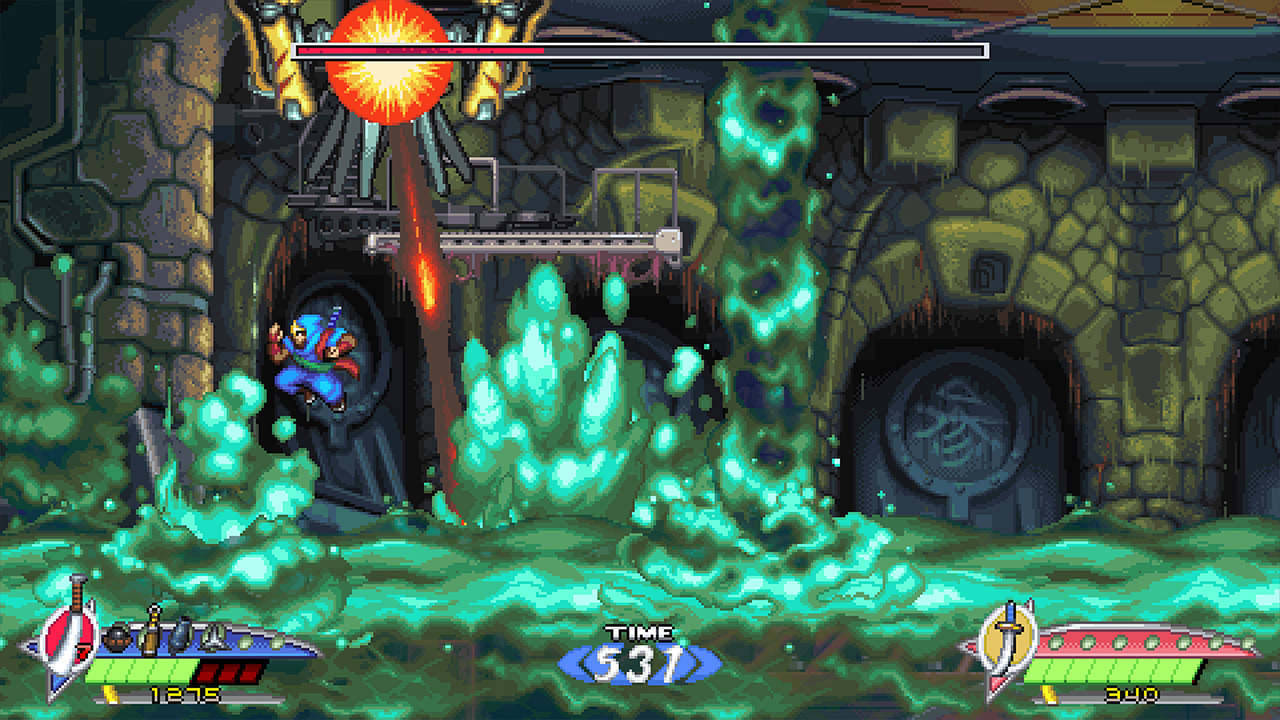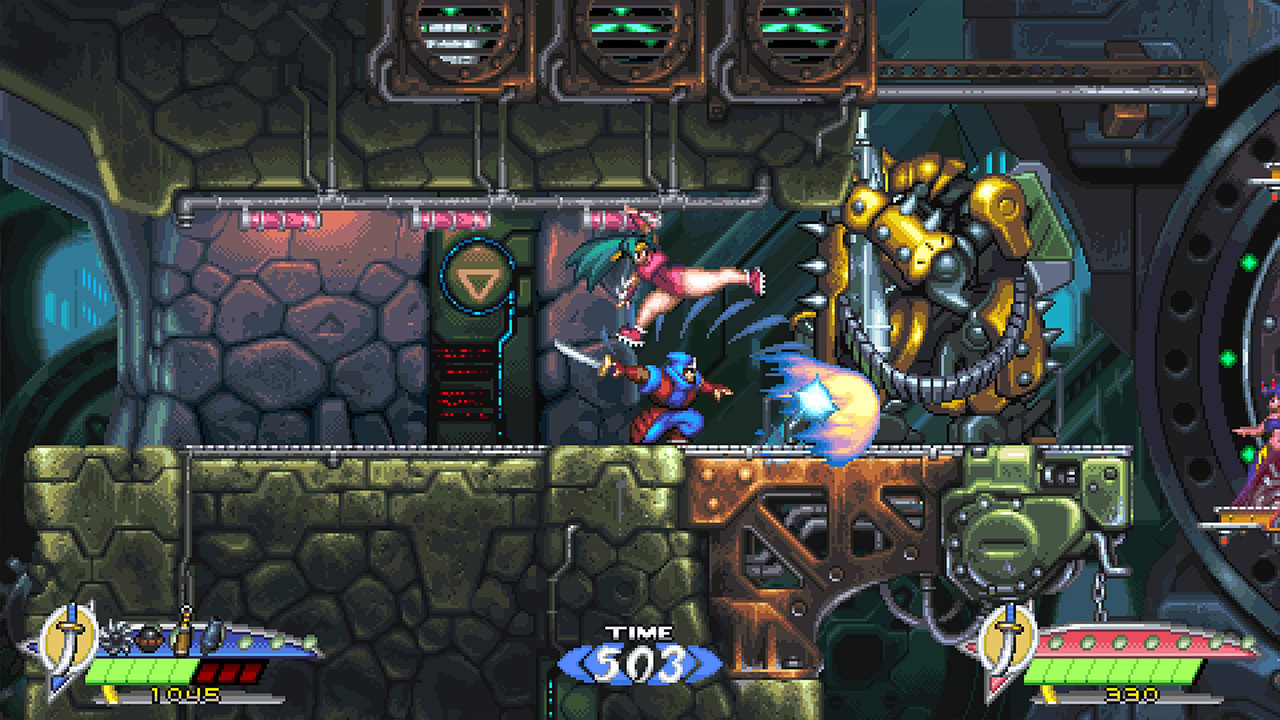As he faced the boss he cast no shadow.
Should I ever be reborn, I hope I will make life easier on people than I did this time around. I don’t want to be reborn and have people refer to me as “challenging” or “brutal.” Tengo Project—the developers of Shadow of the Ninja – Reborn—did not share that sentiment. (They do share a lot more, however, in this documentary published by ININ Games.)
The original Shadow of the Ninja was released for NES in 1991, and subsequently resurfaced on the Wii, 3DS, Wii U, and even Nintendo Switch Online. This is the first release to be “reborn,” however, a word which here means “visually enhanced, with some gameplay adjustments to boot.” It does not mean the game is any easier to play. Action games had to be hard in 1991, you see. With few levels and singular gameplay, formidable challenge was all that prevented the buyer from wrapping the game up in just a couple of days. Or hours.
And just what is that challenge? You play as one of two ninjas (or both if you have a buddy handy for local co-op) tasked with assassinating a dystopian ruler of 2029 America. You do this by progressing through linear stages, attempting to destroy countless enemies who block your way. Despite the modern setting, your default weapons are inconveniently traditional: a katana and kusarigama. You can jump and dodge as well, and progression against even basic enemies requires you to learn attack patterns and expertly time your moves. Don’t even get me started on the boss-battle difficulty spikes in this already difficult game.
Thankfully, the game does take pity on you. Each level is divided into sub-chapters, for starters, and death sends you back to the last of these that you completed, not all the way back to the beginning of the level. Die enough, and the game actually starts to help you out by providing more health items and weapon enhancements. Beat a stage, and any acquired enhancements will be instantly available for “purchase” on future runs. In addition to making the game easier with each playthrough, it also adds some variety while you play through it.
Visually, Shadow of the Ninja – Reborn has been updated to feel more like a late-’80s, early-’90s arcade game than an NES game.
It has a decent amount of detail and depth that makes it appear more modern without sacrificing its sense of nostalgia. The level settings are what you’d expect from a 20th century prediction of 21st century dystopian America, and their goofy charm makes them fun to work through. I’ve never played the original game, so I can’t comment on how these visual enhancements change the experience. If you’re really all about that NES style, however, display adjustments are available to help recreate that vibe.
Once you do get good enough at the game, it can actually be completed in a couple of hours. Again, that’s why it’s so hard up front. But it actually is fun to play through multiple times, and there’s a Time Attack mode to provide additional incentive. The big draw, however, is local co-op. The two characters can’t damage one another, so it’s also a friendly option for multiplayer…unless you’re always getting mad at your partner for dying before you.
In fact, that’s the only way I was able to get through. Being able to claim I beat a difficult game is never an incentive for me. Sharing that struggle with a family member, however, can be quite fun (provided you have the same sense of humor and level of patience). That’s the way to work through Shadow of the Ninja – Reborn. If you’re on your own, I suggest either considering another of the countless arcade action games available or waiting for Shadow of the Ninja to be reborn again.
Review: Shadow of the Ninja – Reborn (Nintendo Switch)
Good
Shadow of the Ninja – Reborn is an exceptionally difficult arcade-action game that’s best enjoyed when shared with a friend. This release’s gameplay and visual tweaks modernize the experience a bit, but it’s still likely to appeal solely to those accustomed to the challenges of early ’90s NES action games.





